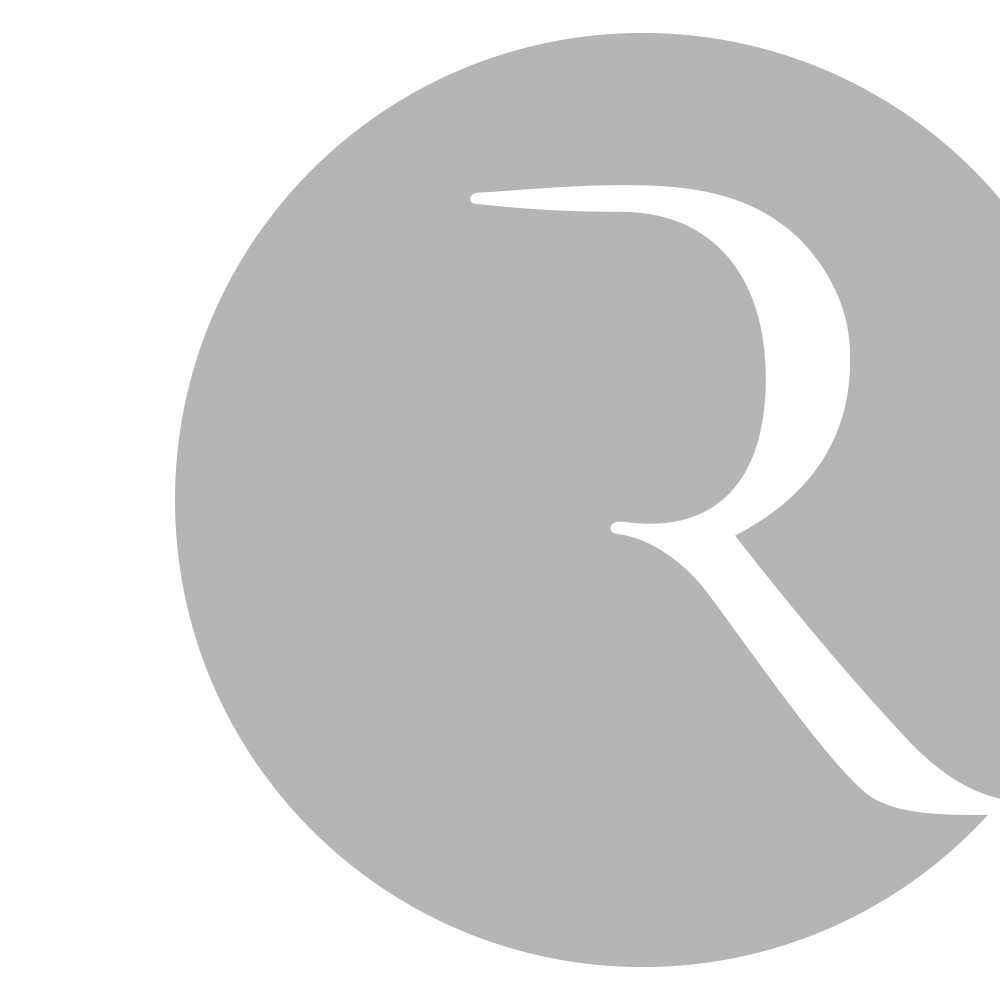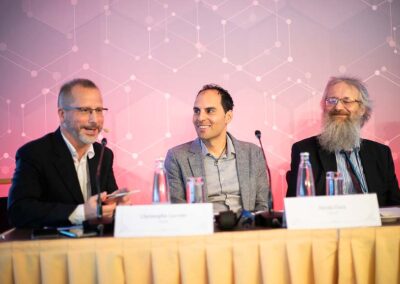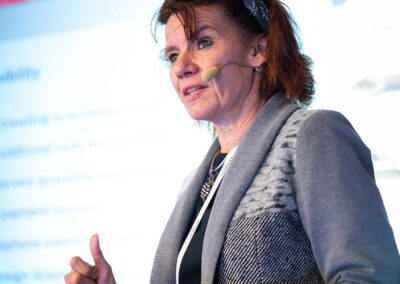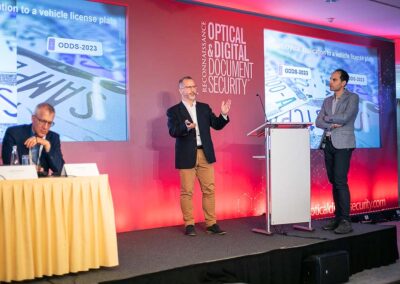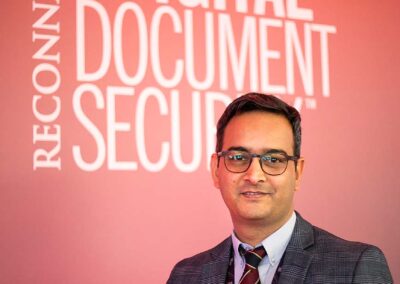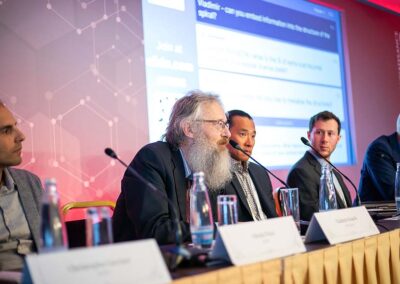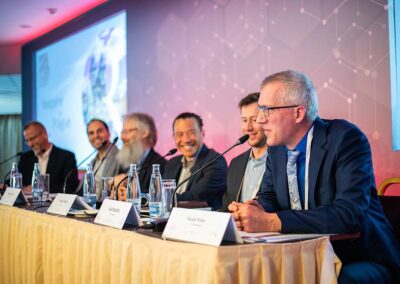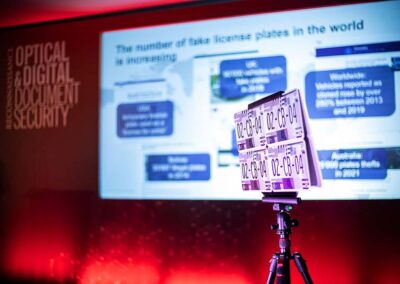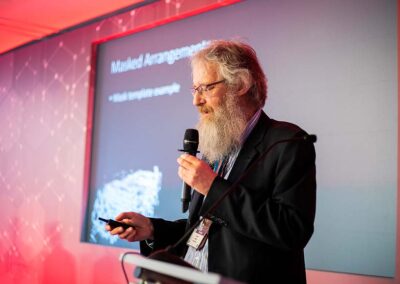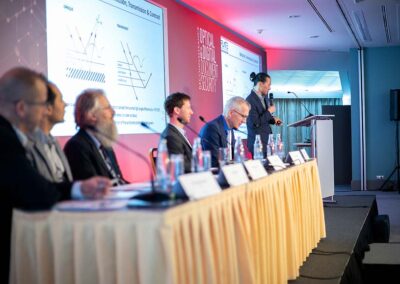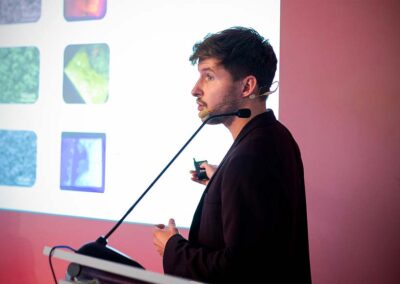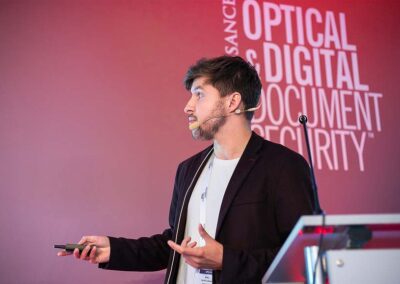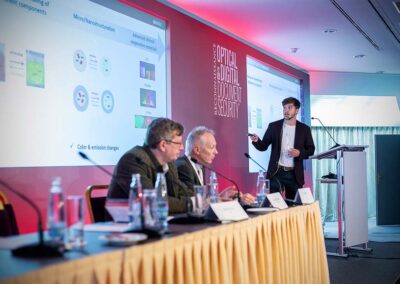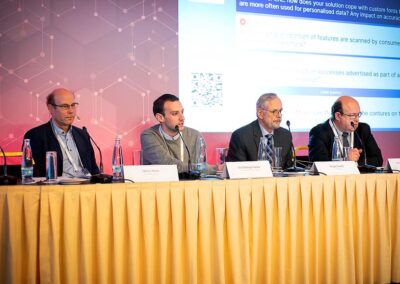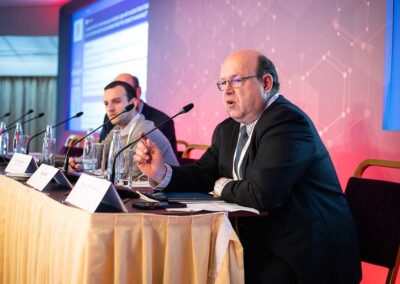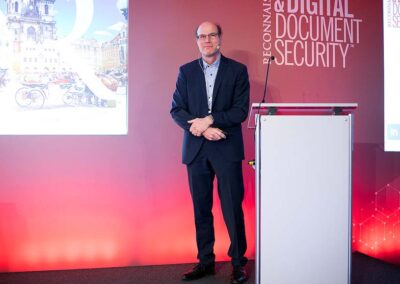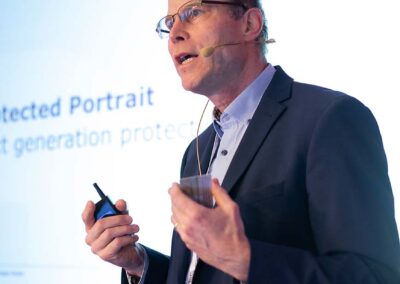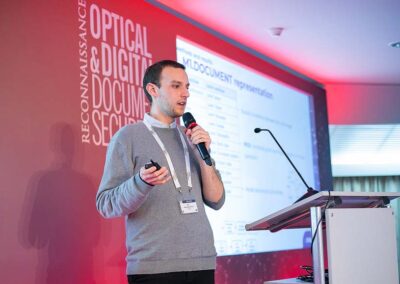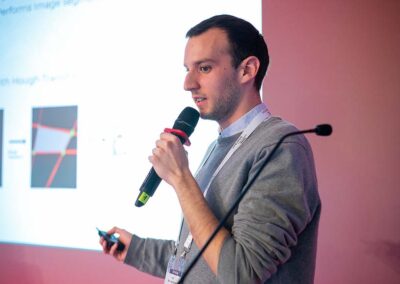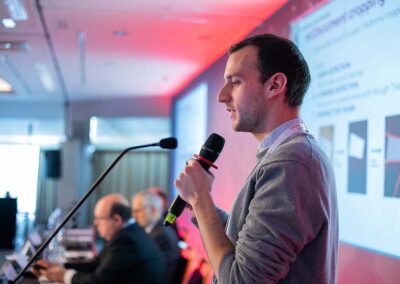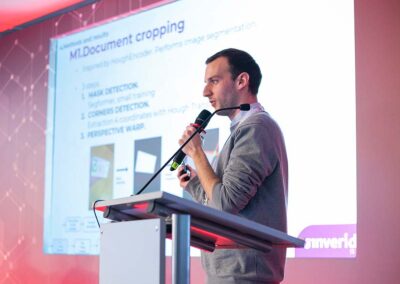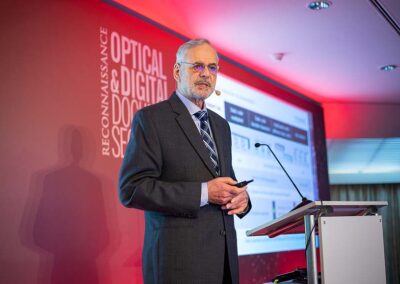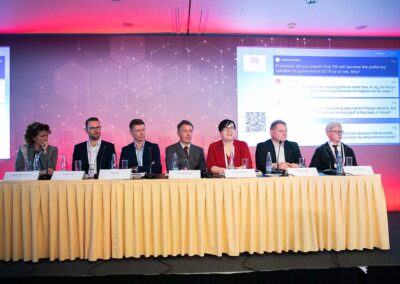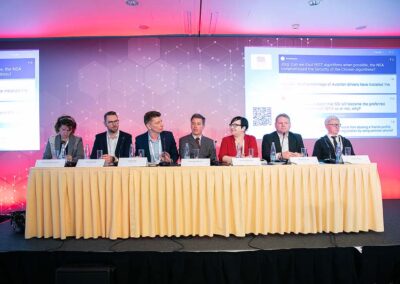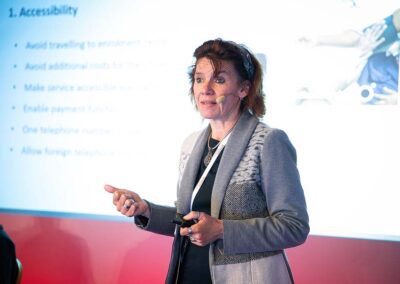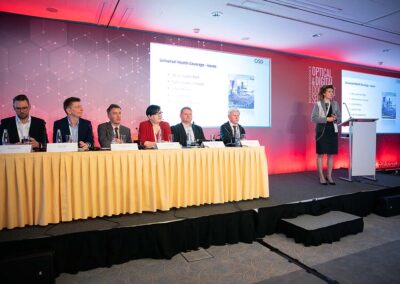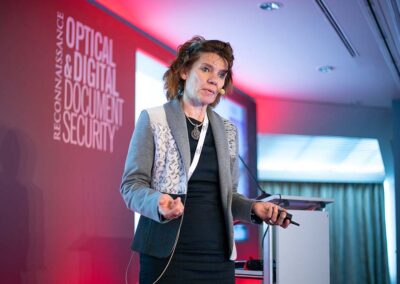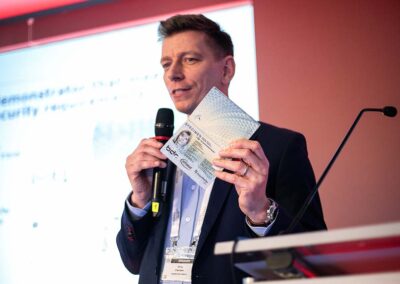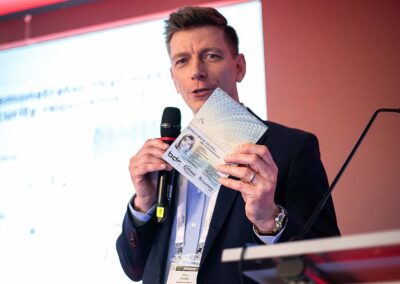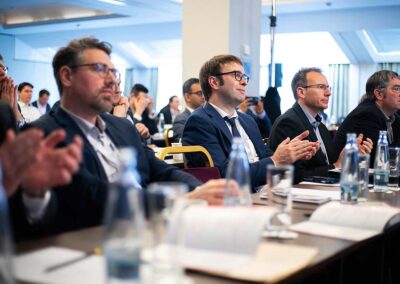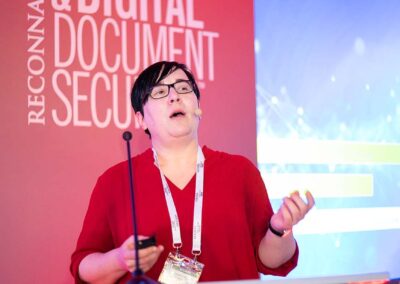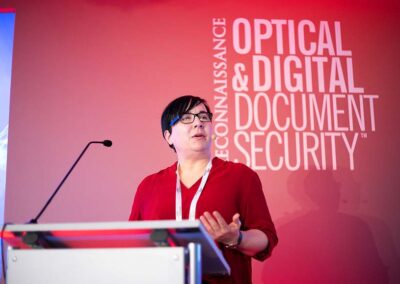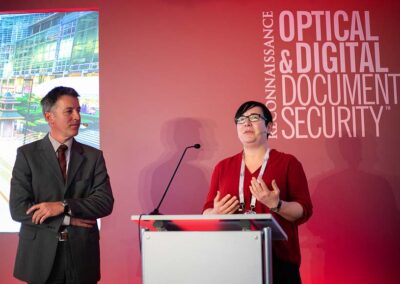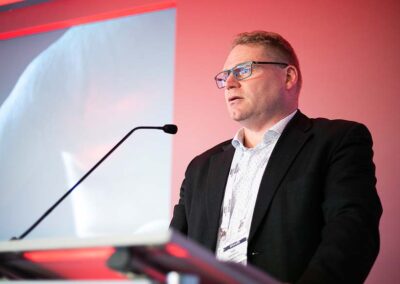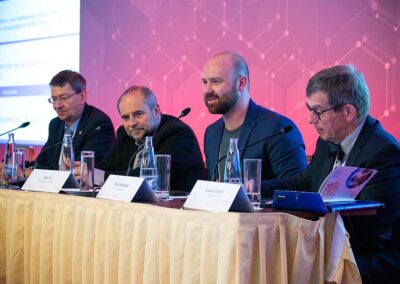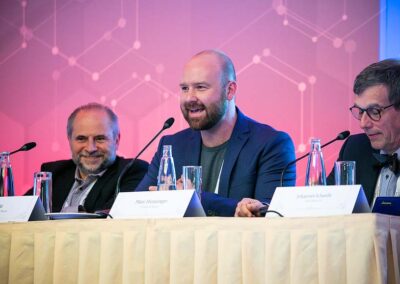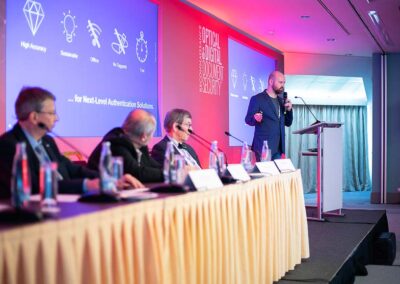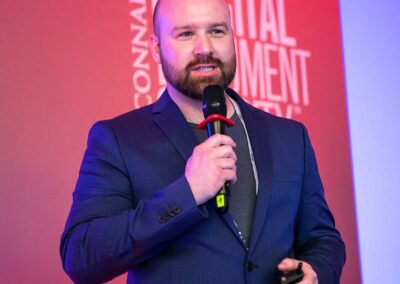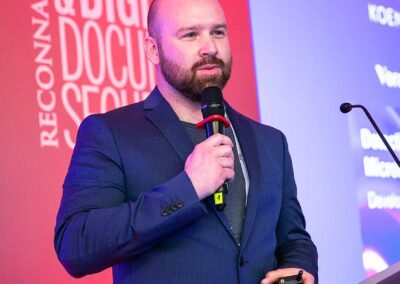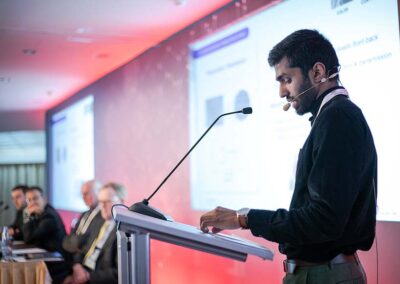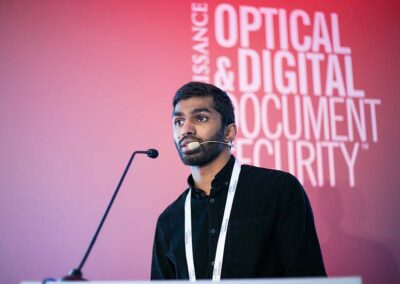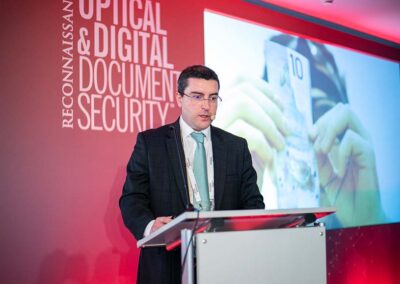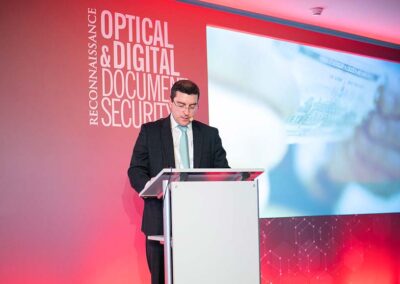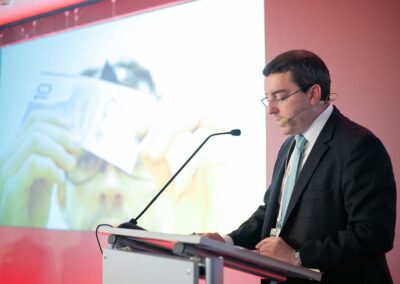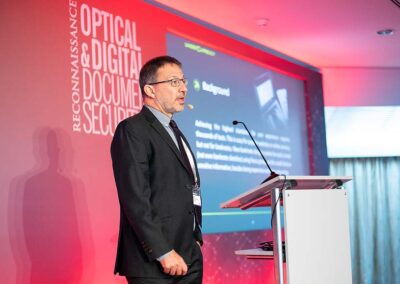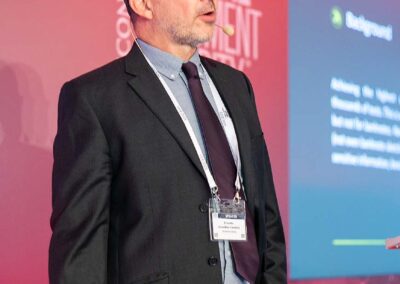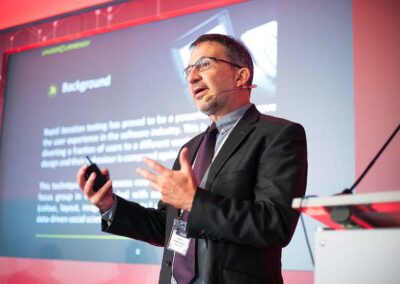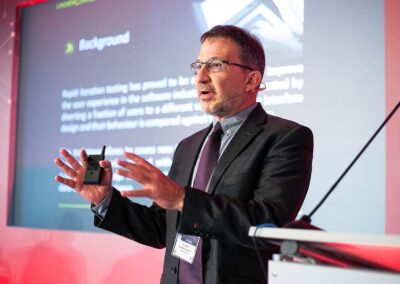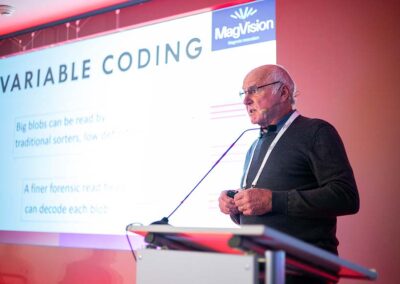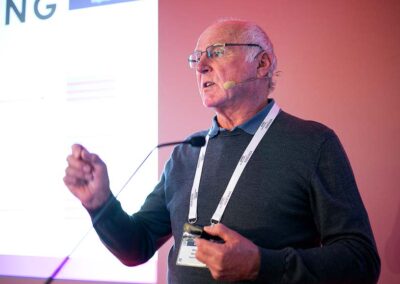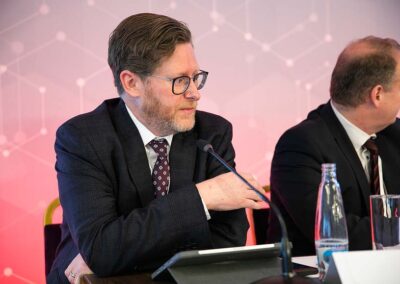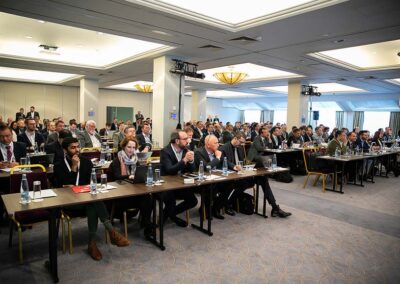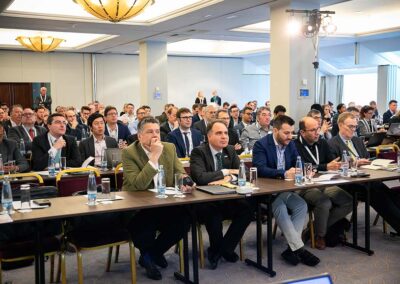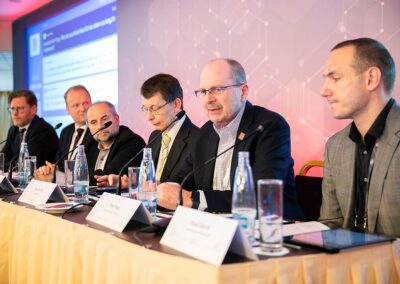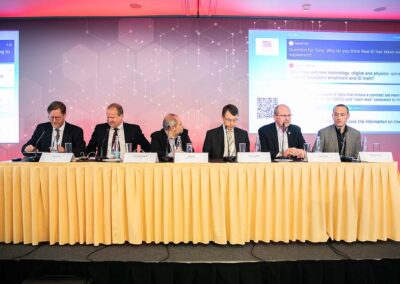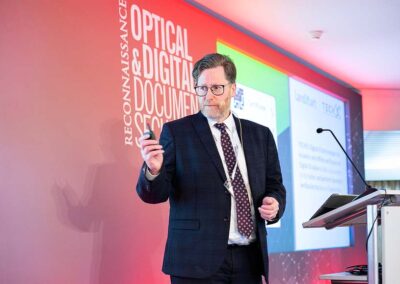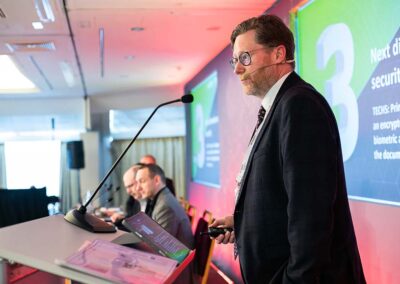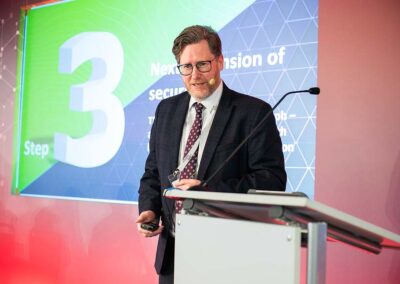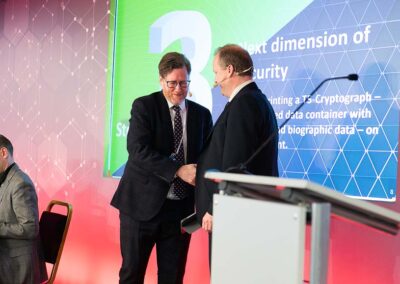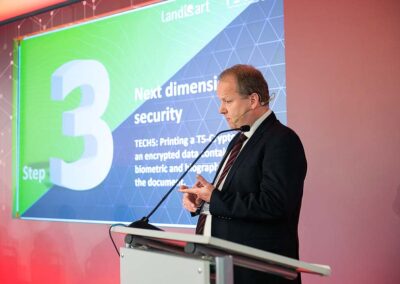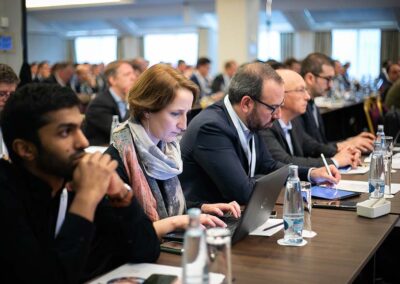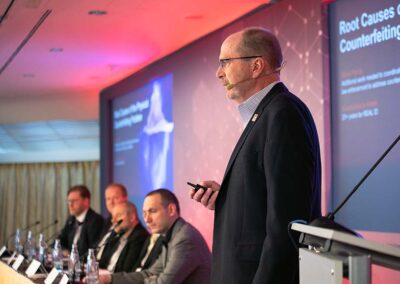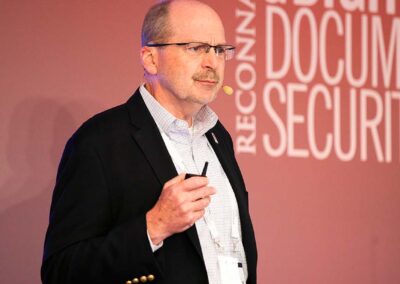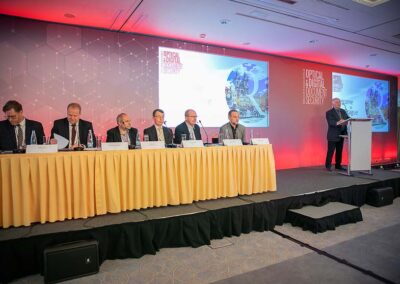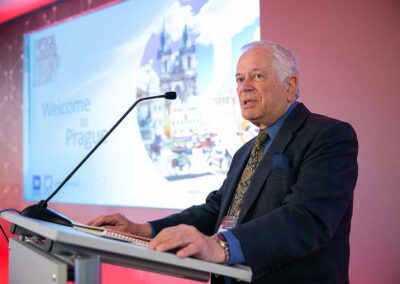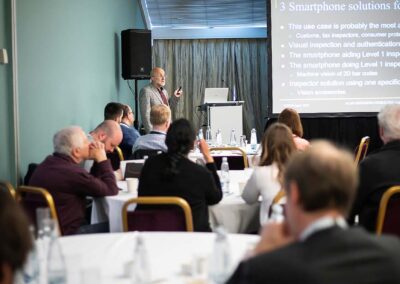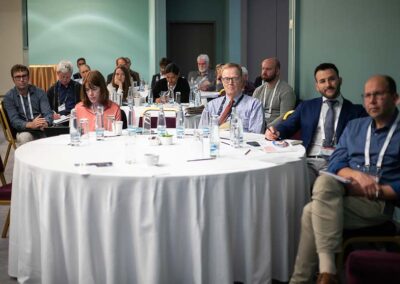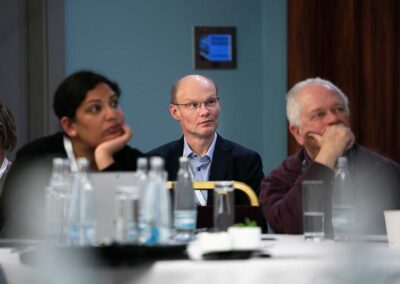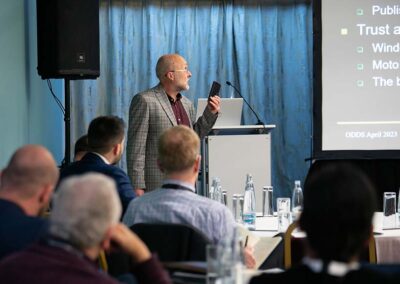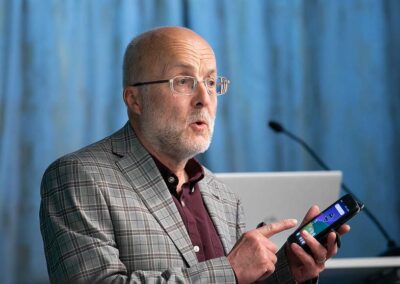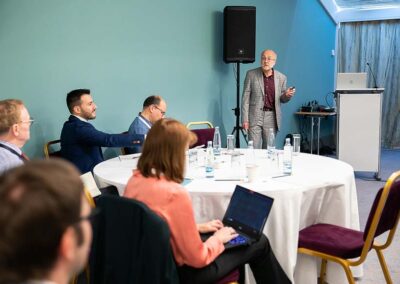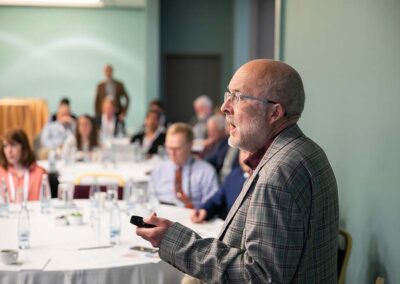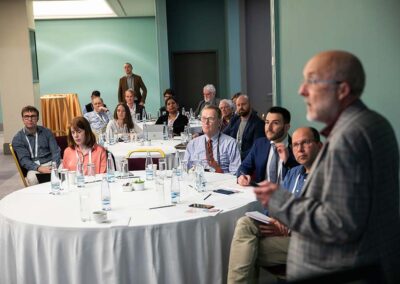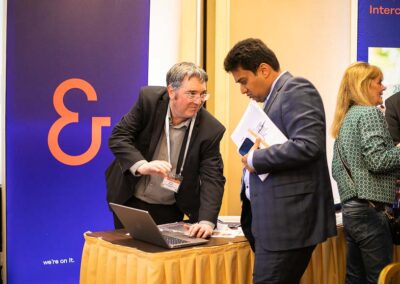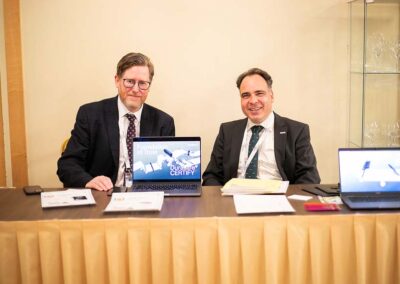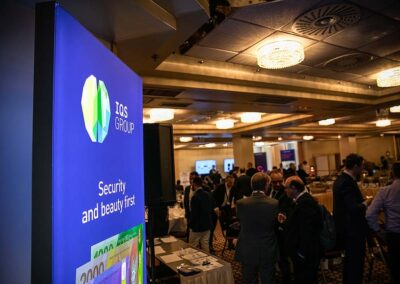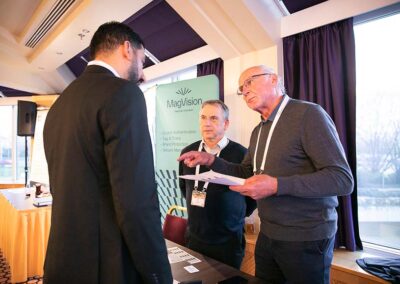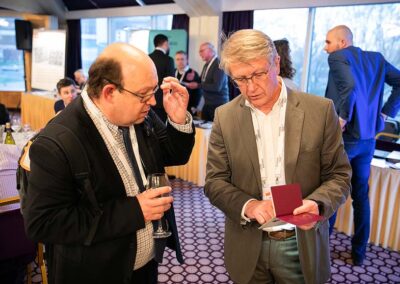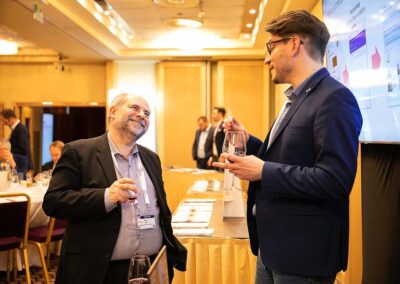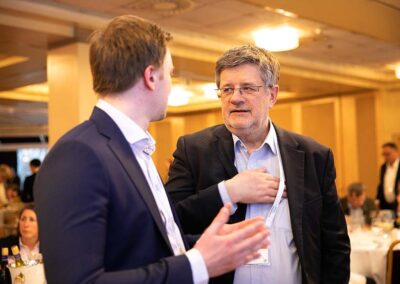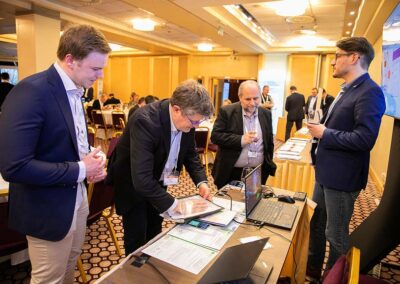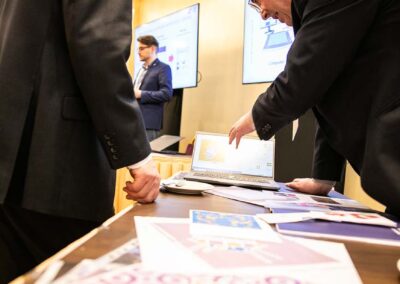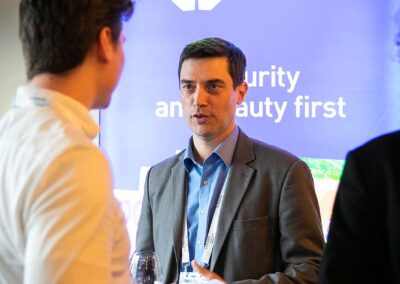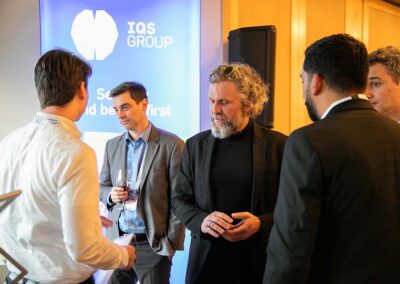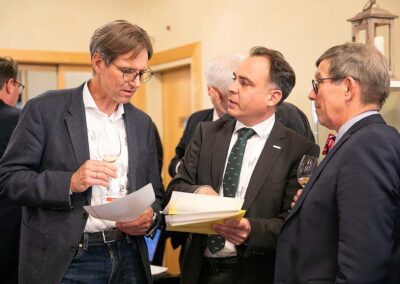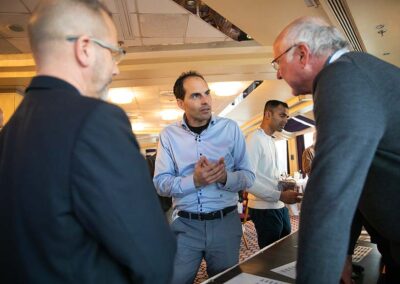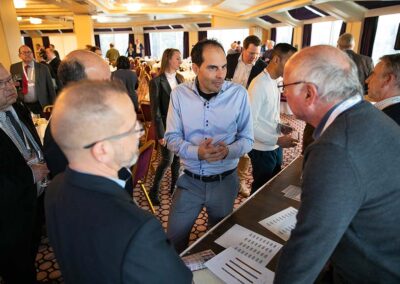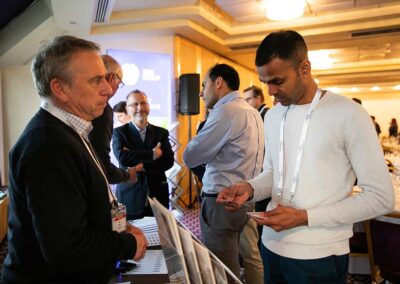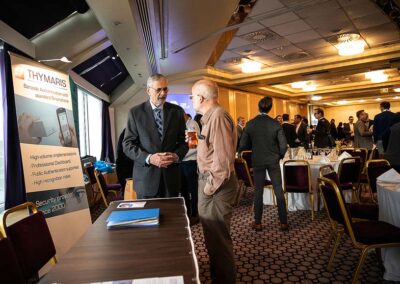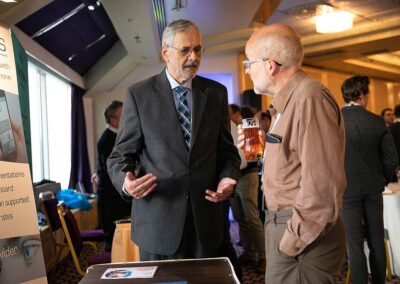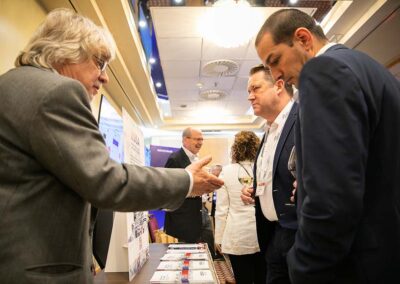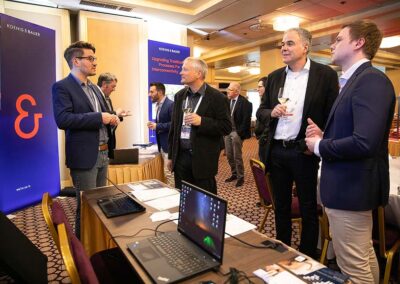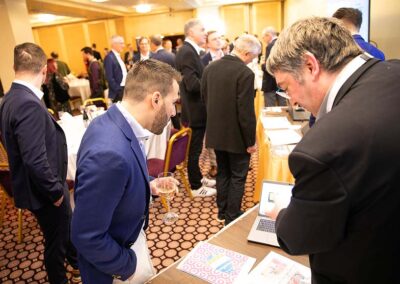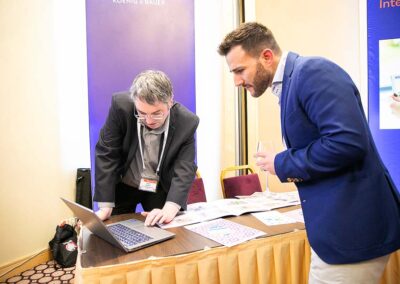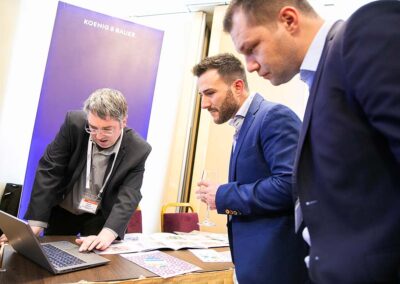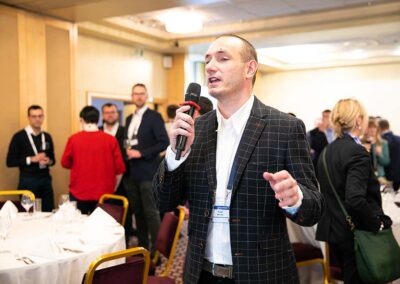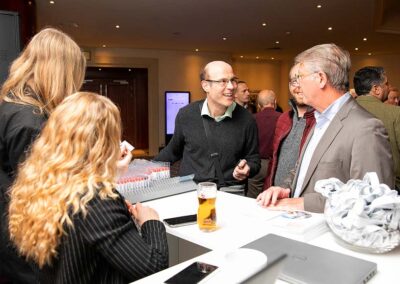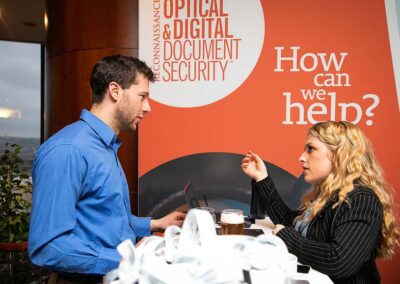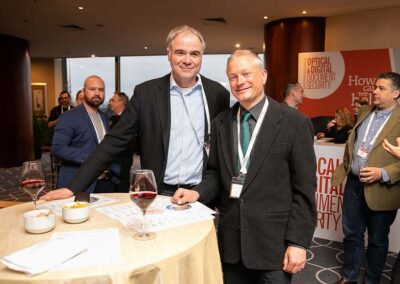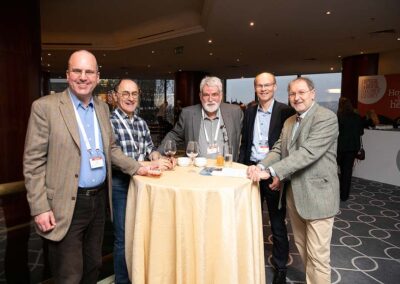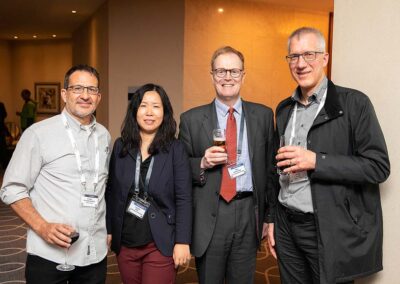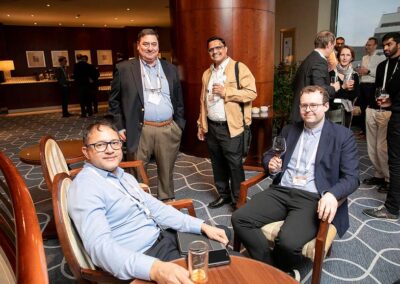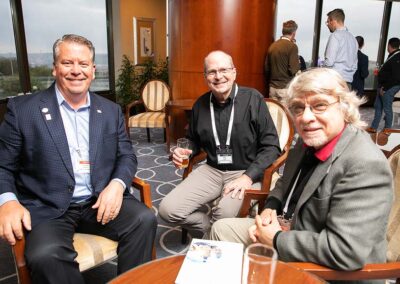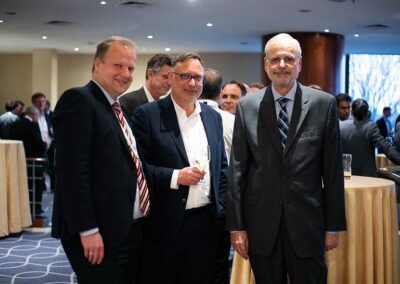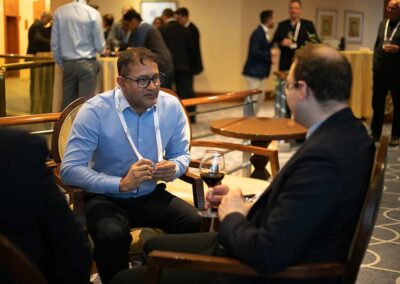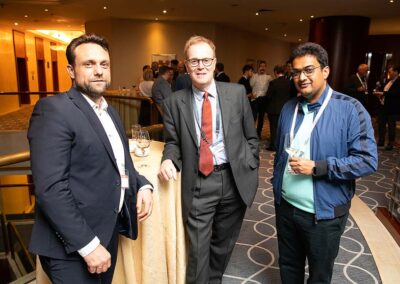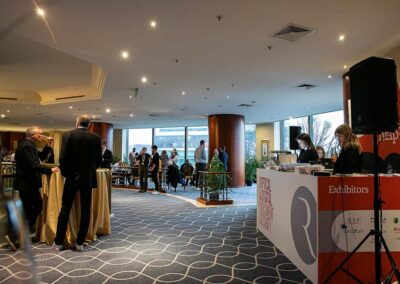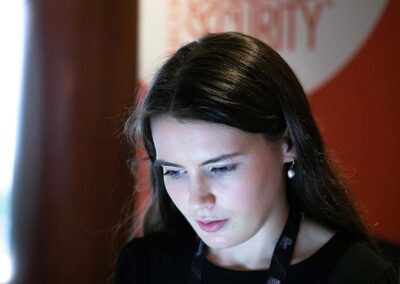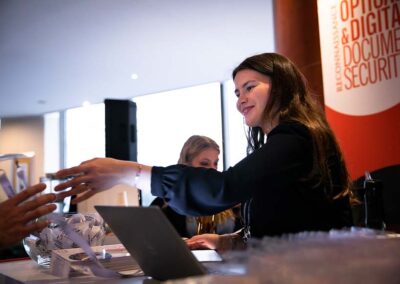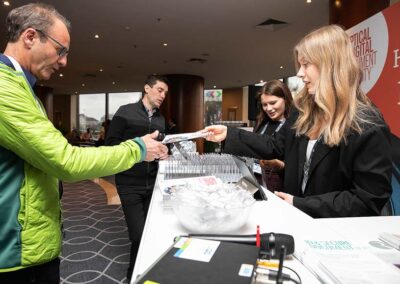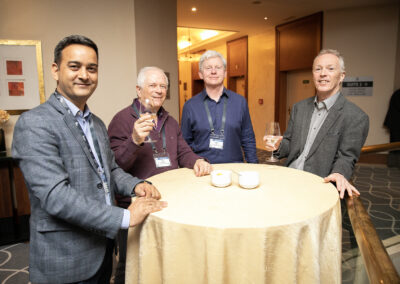ODDS 2023 Review – Prague
Access to the presentations is limited to ODDS 2023 attendees, please use the password which was provided by the [email protected]
The Optical & Digital Document Security Conference Review
Overview
Two underlying themes emerged at the ODDS conference in Prague, Czech Republic: concerns about data privacy and the use of personally identifiable information (PII), and the continuing difference in the drivers for the traditional security document community and digital systems developers. In the words of Ian Lancaster, conference Chairman, the former is driven by the need for security, while the latter are driven by their desire to develop new and easier ways for financial transactions and identity verification. Or, as Garry Sidaway of NTT Security, has put it, “Convenience and security are uneasy bedfellows”.

ODDS 2023: Attendance breakdown
Attendance
The conference was attended by 167 people, from 27 countries and 94 organisations. Of these organisations, 42 are involved with physical security documents – as issuers, printers or component suppliers; 16 are in the digital arena and 12 work on optical features. Although the majority of participants represented established companies, the public sector and innovative organisations were well-represented, as shown on the pie chart.
The interest in this sphere from all participants was well-demonstrated at the conference dinner and exhibition on the Tuesday evening, when the dozen exhibitors were kept busy showing and talking about their work – be it a trade association seeking more members or a start-up company demonstrating its new technology. And this despite the excellent food and drinks available!
Programme
The conference got under way on Monday afternoon with a well-attended seminar presented by Dr Alan Hodgson, in which he addressed whether smartphones are “effective and/or convenient” in this era of digital transactions. He covered the technology of smartphones before considering socio-economic factors, pointing out the transition of power and responsibility from governments and banks to the tech giants. He concluded that perhaps the environmental, social and governance (ESG) issues will come to play a bigger role in the development of smartphone use in the ODDS sphere.
The Programme of Presentations
Two days of conference presentations were kicked-off by Tony Poole from the Document Security Alliance (DSA), running through some alarming statistics about identity fraud in the USA, as a way of giving context for the following presentations which mainly covered security techniques. Tony pointed out that the internet is now a major source of fraudulent ID documents, but people requesting such items online are at risk of their PII (personally identifiable information) being used for other criminal purposes.
The first conference session explored the phygital – the links between the physical and digital worlds. Duncan Reid presented his findings on “Banknotes in a Digital World to 2032”, with Marc Pic of Advanced Track & Trace explaining the transformation of banknotes to digital currencies. Landqart and Tech5 then showed how they are producing laminated substrates with digital data securely inlaid.
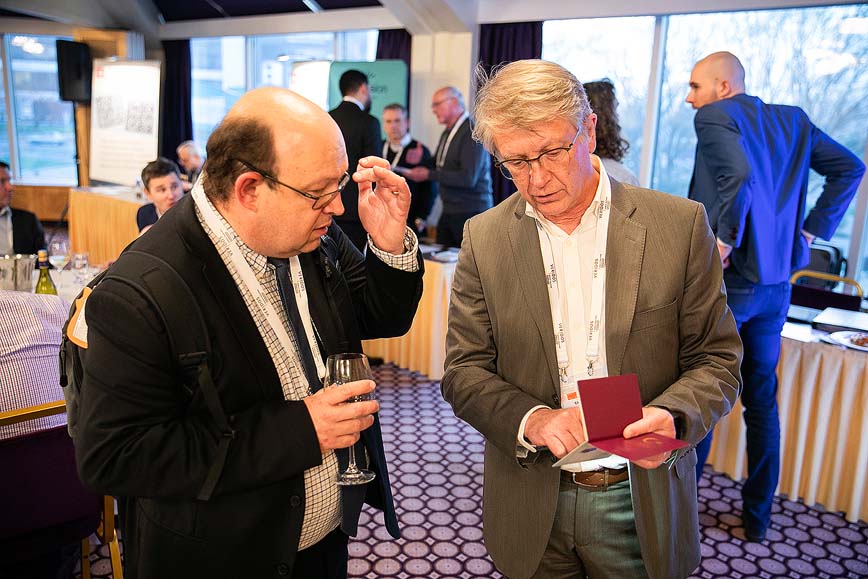

This first session set the tone for the conference, as it became apparent that ODDS participants view physical and digital systems working in parallel in the foreseeable future.
It remains true that ODDS is more representative of physical secured documents than the digital or virtual ID and transaction field. Perhaps this is inevitable given the conference’s genesis in the Optical Document Security conference, although the balance has improved since the first conference.
So it was that there were two sessions on document security and two sessions on new optical security techniques, sandwiching sessions on protecting Identity in the digital age – perhaps now one of the most important topics in the conference.
Among the issues covered in these ID sessions were centralised or decentralised digital ID ecosystems; biometrics; the challenge of quantum computing and artificial intelligence; MRTDs (machine readable travel documents); the latest security features on the German ID card, in presentations given, respectively, by Veridos, the Security Identity Alliance, Bundesdruckerei, Veridos (again), the University of Twente and Bundesdruckerei (again). Also in these sessions Sergei Toedtli of Thymaris gave examples of how digital security features have been counterfeited and Claudia Schwendimann, of the Austrian State Printing House, gave a case study on the new Ghanaian health insurance app.
Interestingly, in the document security sessions there were two presentations about banknote design, from UnderCurrency and Banco de España, illustrating the point that there is still interest in improving banknote security. These sessions included presentations on new magnetic ink (MagVision); micro- and nano-security elements (Surys); detecting non-artificial microstructures (Koenig & Bauer); authentication using super-resolution images (Advanced Track & Trace), and verifying certificates for personal protective equipment (InIT).
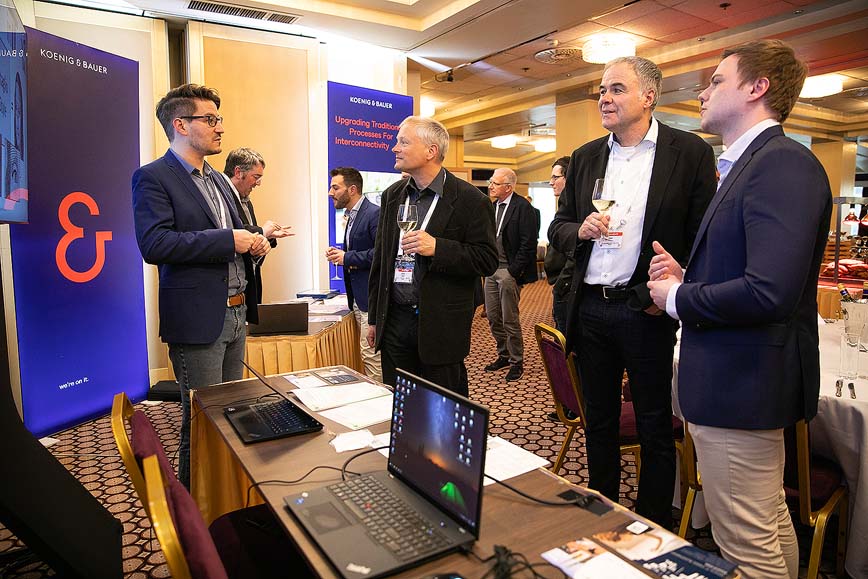
The optical security sessions comprised presentations from well-established providers as well as new entrants to the field – again, showing continuing interest and inventiveness. The former included OVD Kinegram’s presentation on structural colours; SICPA presenting its new LCD printing for vehicle licence plates and IQS Group (which sponsored the conference in its home city) showing its work on spiral configurations for DOVID design. Newcomers showing their technology were Chromatir, a Penn State University spin-off, which has invented a novel optically-variable device technique; 4Plate explaining how it’s integrating optical security in to the body of plastic cards; Distinkt, a collaborative venture between four Catalan institutions, revealing its NIR-induced colour-changing inks; and Soochow University presenting its new approach to microlens array security devices.
The Panel Discussion
Halfway through the second day, Ian Lancaster chaired a panel of Joachim Caillosse, Security Identity Alliance; Volker Lohweg, InIT; Tony Poole, DSA and Jörg Fischer, Bundesdruckerei, addressing the question of whether there is a future for physical security documents. After a brief statement from the panel members (each affirming from their different perspectives that there is a future), Lancaster opened it for general discussion. But before doing so he asked anyone under 30 in the hall to put their hand up. When no-one did (except the members of the Reconnaissance team!) he suggested that “perhaps we are the wrong generation to consider this question.” Nonetheless, a lively discussion followed, where the concerns about privacy and PII security were to the fore.
Attendance stayed healthy right to the last presentation and participants commented on the value and interest of the event. Nonetheless, the Conference Committee recognises the need to create a programme with a better representation from the digital community.
inIT-Institute Industrial IT
Bundesdruckerei
ANY Security Printing
Gallery
Click on any picture to see the full gallery.
Luminescence SunChemical Security
M.J.M. International
Lebanese American University
Attendees
3D AG
Switzerland
4Plate GmbH / Pro Gravur AG
Switzerland
Advanced Track and Trace
France
Alan Hodgson Consulting Ltd
United Kingdom
Angstrom Technologies, Inc.
USA
ANY Security Printing Co. Plc.
Hungary
APO Production Unit, Inc.
Philippines
Authentic Vision GmbH
Austria
Authentication Consultant
USA
Banco de España
Spain
Bank Note Paper Mill India
India
Bank of Canada
Canada
Banque De France
France
Bundesdruckerei
Germany
Canadian Banknote Company Limited
Canada
CCL Secure
Australia
Chromatir
USA
Collano AG
Switzerland
Crane Currency
Sweden
Crime Science Technology
France
CSEM SA
Switzerland
Danish National ID Centre
Denmark
Danmarks Nationalbank
Denmark
Department of Foreign Affairs and Trade – Australia
Australia
Deutsche Bundesbank
Germany
Distinkt SL.
Spain
DNP Imagingcomm Europe BV
Netherlands
Document Security Alliance (USA)
USA
DSTL
United Kingdom
European Central Bank
Germany
Federal Reserve Board
USA
German Patent and Trade Mark Office
Germany
Giesecke + Devrient
Germany
Gleitsmann Security Inks Gmbh
Germany
Gradus Proximus
Austria
GSI
Germany
HID Global
Ireland
Holostik India
India
Honeywell
Germany
Hueck Folien GmbH
Austria
Hungarian Banknote Printing Company
Hungary
IHMA
United Kingdom
inIT – Institute Industrial IT
Germany
Inverid
Netherlands
IPZS
Italy
IQ Structures
Czech Republic
Koenig & Bauer Banknote Solutions
Switzerland
Landqart
Switzerland
Los Alamos National Laboratory
USA
Luminescence Sun Chemical Security
United Kingdom
MagVision
United Kingdom
Maurer Electronics GmbH
Germany
National Bank of Belgium
Belgium
National Examinations Council of Tanzania
Tanzania
NMCox Consulting Inc.
USA
Oberthur Fiduciaire
France
Oesterreichische Banknoten- und Sicherheitsdruck GmbH
Austria
Optaglio a.s.
Czech Republic
Orell Füssli AG
Switzerland
Österreichische Staatsdruckerei
Austria
OVD Kinegram
Switzerland
Papierfabrik Louisenthal
Germany
PWPW
Poland
Raith
Germany
Schwarz Druck GmbH
Germany
Seculysis Research Institute
Japan
Secure Identity Alliance
SICPA
Switzerland
Smithers
USA
State Grid Corporation of China
China
State police of Latvia, Forensic Service department
Latvia
Statini Tiskarna Cenin, s.p.
Czech Republic
SunChemical
Belgium
Surys
France
Swiss National Bank / CBCDG – Central Bank Counterfeit Deterrence Group
Switzerland
TECH5
Switzerland
Technische Hochschule Ostwestfalen-Lippe
Germany
Thales
France
Thymaris GmbH
Switzerland
Toppan Inc.
Japan
U-NICA Solutions AG
Switzerland
UnderCurrency
Mexico
University of Manchester
United Kingdom
Veracity Protocol
Czech Republic
Veridos
Germany
Viavi Solutions
USA
Witte Technology GmbH
Germany
Yoram Oren
Israel
Zeiser GmbH
Germany
Zhongchao Special Security Technology
China
Programme
Access to the presentations is limited to ODDS 2023 attendees, please use the password which was provided by the [email protected]
Programme Committee Members
Aurélie Berthon
Koenig & Bauer
Jeff Conroy
Authentix
John Winchcombe
Cash & Payment News™
Monday 17 April 2023
13:30 – 17:00 Seminar – Smartphones in the New ODDS World: Effective and/or Convenient?
Smartphones are now indivisible from optical and digital security for financial transactions, identify verification, document and product authentication and supply chain security.
Whether you carry your identity information digitally or want to order a taxi online, you need your smartphone. Similarly, smartphones are becoming indispensable in supply chain monitoring, product authentication and validating your means of payment.
But how good are they in actually keeping you and your personal information secure? And what happens if you don’t have a smartphone – or there is no network coverage where you are?
In this seminar Dr Alan Hodgson will address these questions – and more. He will take a critical look at smartphone technology, lifecycle and more to address the issue of whether we are becoming over-reliant on them in this new digital and virtual world.
He will start by analysing the broad landscape for smartphones in this new world, looking at political, economic, social and technical issues. Then he will get more specific about smartphone technology and security, covering topics such as the camera performance and its suitability for verifying optical features and 2D codes; and, because smartphones largely depend on connectivity to do their job, he will look into the security of networks and wifi systems.
The seminar will include case studies on the use of smartphones as a substitute for cash, as provers of our identity, for reading codes – where he will consider the different requirements of consumers and inspectors – as well as comparing smartphones with more specialist purpose-built devices.
In the later part of the seminar Dr Hodgson will consider emerging technologies, both those pertinent to smartphones and those that might compete with or usurp them.
What this will create is a seminar that addresses the fundamental issues of the balance between efficiency, convenience and security of smartphone solutions. It will ask are we right to become so dependent on them and if not what do we do about it; and where does control lie in the complex issue of electronic payment/identity/authentication? This is the issue that will be covered in a panel discussion that will close the seminar, which will be your chance to ask about these absolutely key matters.
This will be an important participatory seminar to kick off Optical & Document Security 2023, and vital for you to attend if you are active in optical or digital security of ID and transactions – especially if you are placing smartphones in the mix of security verification.
About Dr Alan Hodgson
Dr Alan Hodgson has a background in printing and holography, initially from the photographic industry and then with 3M in security printing. He now works as an independent consultant in the field of printing and imaging.
His interest in smartphones started with the early days of phone cameras and their photographic capabilities. As the smartphone platform developed into the multiple capabilities we see today he continued to study these, noting the trade-offs between capabilities and vulnerabilities and between threats and opportunities across a range of applications. This seminar will provide a summary of the learning on this journey.
Alan is a Visiting Academic in Material Science at the University of Manchester and an Expert Fellow to the SPRITE+ university collaboration which investigates Security, PRivacy, Identity and Trust Engagement in the digital space. Supporting these he is active in the field of International Standards for photography, printed electronics and wearable devices.
He is a contributing author to a number of the Reconnaissance International publications and has presented papers and courses at their events.
Tuesday 18 April 2023
Hover on the presentation title or speaker to see if more information is available.
Session 1 – The Link Between the Physical and Digital Worlds
08:40
The Impact of Counterfeiting of Physical and Digital Identities
Tony Poole
Document Security Alliance (USA)
09:00
The Future of Physical vs Digital Currency: Banknotes in a Digital World to 2032
Duncan Reid
Smithers (UK)
09:20
Hybrid Currencies : How to Transform Banknotes to Digital Currencies
Marc Pic
Advanced Track & Trace (France)
09:40
Securely Combining Physical Security Documents with the Digital Realm
Hanno Goldbach
Landqart (Switzerland)
Andy Gray
TECH5 (Switzerland)
10:05 Session Q&A
10:15 Break – Refreshments
Session 2 – New Approaches to Document Security I
12:00 Session Q&A
12:15 Lunch
Session 3 – New Approaches to Document Security II
13:30
Development and Application Test for the Detection of Non-Artificial Microstructures
Marc Hunsaenger
Koenig & Bauer (Germany)
13:50
Multi-Images Super-Resolution to Help Authenticate ID Documents, BankNotes and Products
Marc Pic
Advanced Track & Trace (France)
14:10
Semi-automated Certificate Authenticity Verification on the example of medical personal protective equipment
Volker Lohweg
Institute Industrial IT (Germany)
14:30 Session Q&A
14:40 Break – Refreshments
Session 4 – Protecting Identity in the Digital Age I
15:30
Trust Services and Digital ID Solutions
Franziska Muschik
Veridos (Germany)
Alexander Winnen
Veridos (Germany)
16:30
Universal Health Coverage Made Accessible
Claudia Schwendimann
Austrian State Printing House (Austria)
16:50 Session Q&A
17:05 Close of Day One
18:30 Conference Dinner and Table Top Exhibition
Wednesday 19 April 2023
Session 5 – Protecting Identity in the Digital Age II
09:05
Experiences with Counterfeits of Digital Security Features
Sergej Toedtli
Thymaris (Switzerland)
09:25
CITE: Country Independent Template Extraction from MRTDs
Eric Santiago Garcia
University of Twente; InverID (Netherlands)
09:45
Self-Protecting Portrait – Polycarbonate Inks Beyond Digital Watermarking
Oliver Muth
Bundesdruckerei (Germany)
10:05 Session Q&A
10:15 Break – Refreshments
Session 6 – New Optical Techniques for Security I
10:45
Structural Colours – Powerful & Self-explaining Design Elements
Eduard Miloglyadov
OVD Kinegram (Switzerland)
11:05
Anti-counterfeiting Imaging Device Based on Microlens Array
Su Shen
Soochow University (PR China)
11:50 Session Q&A
12:00 Panel Discussion – Shaping the future of transactions and identity or Is there a future for physical security documents?
12:45 Lunch
Session 7 – New Optical Techniques for Security II
14:00
Optically Variable Films Harnessing Colour-shifting Microstructures
Caleb Meredith
Chromatir (United States)
14:40
DOVID Design in a Non-orthogonal Co-ordinate System
Vladimir Kolarik
IQ Structures (Czech Republic)
15:00
Licence Plate Authentication with Liquid Crystal Printing
Christophe Garnier
SICPA (Switzerland)
Nicola Duca
SICPA (Switzerland)
